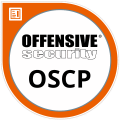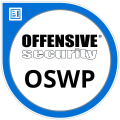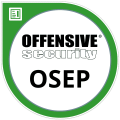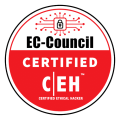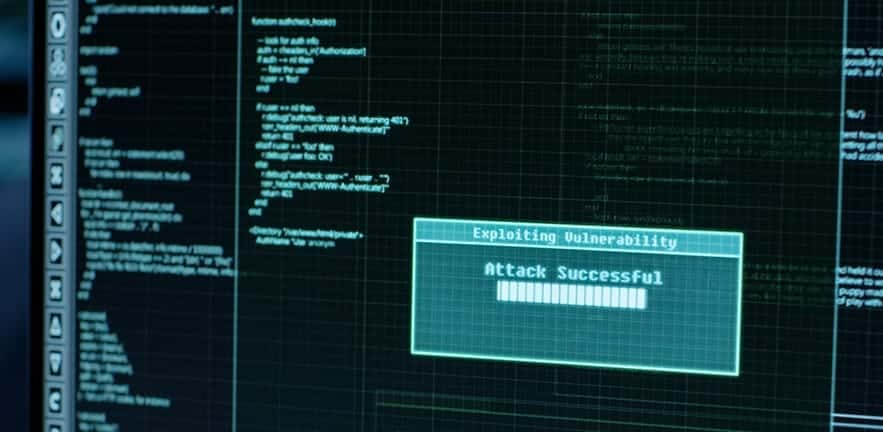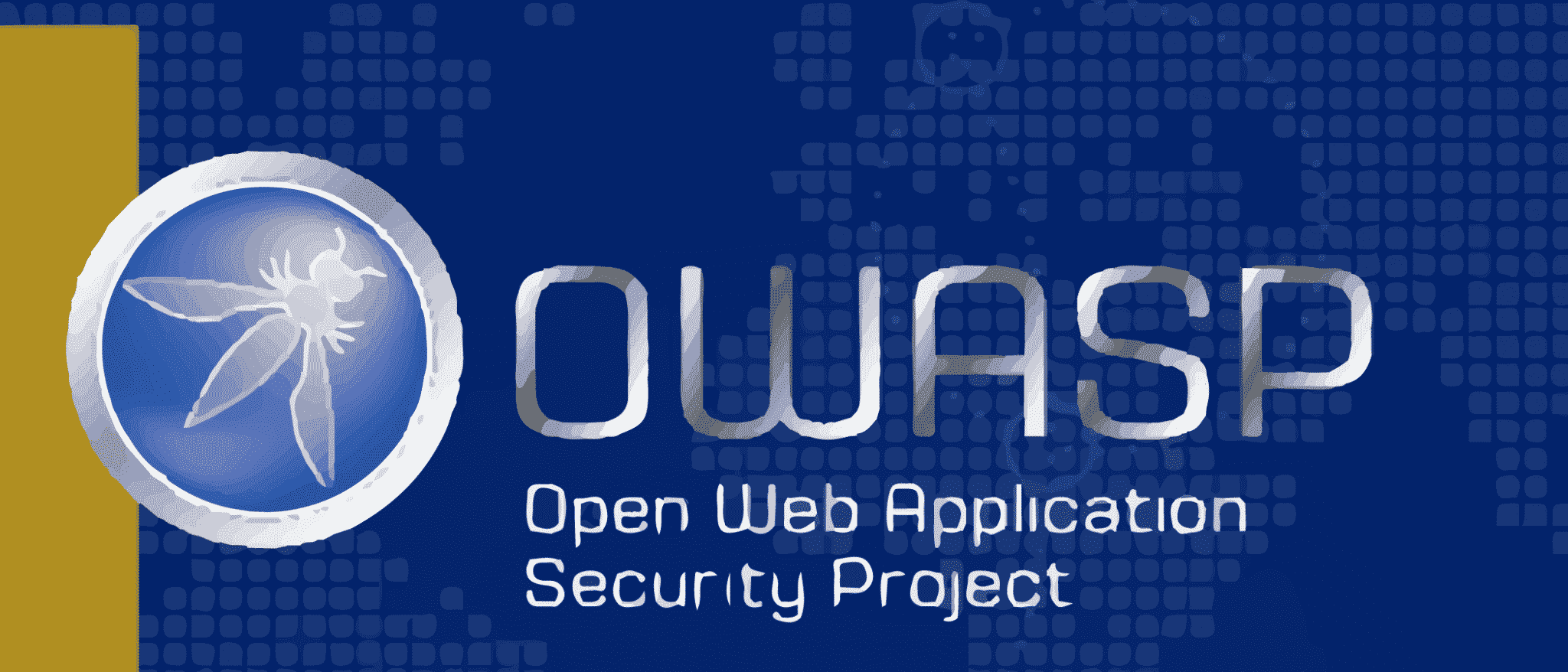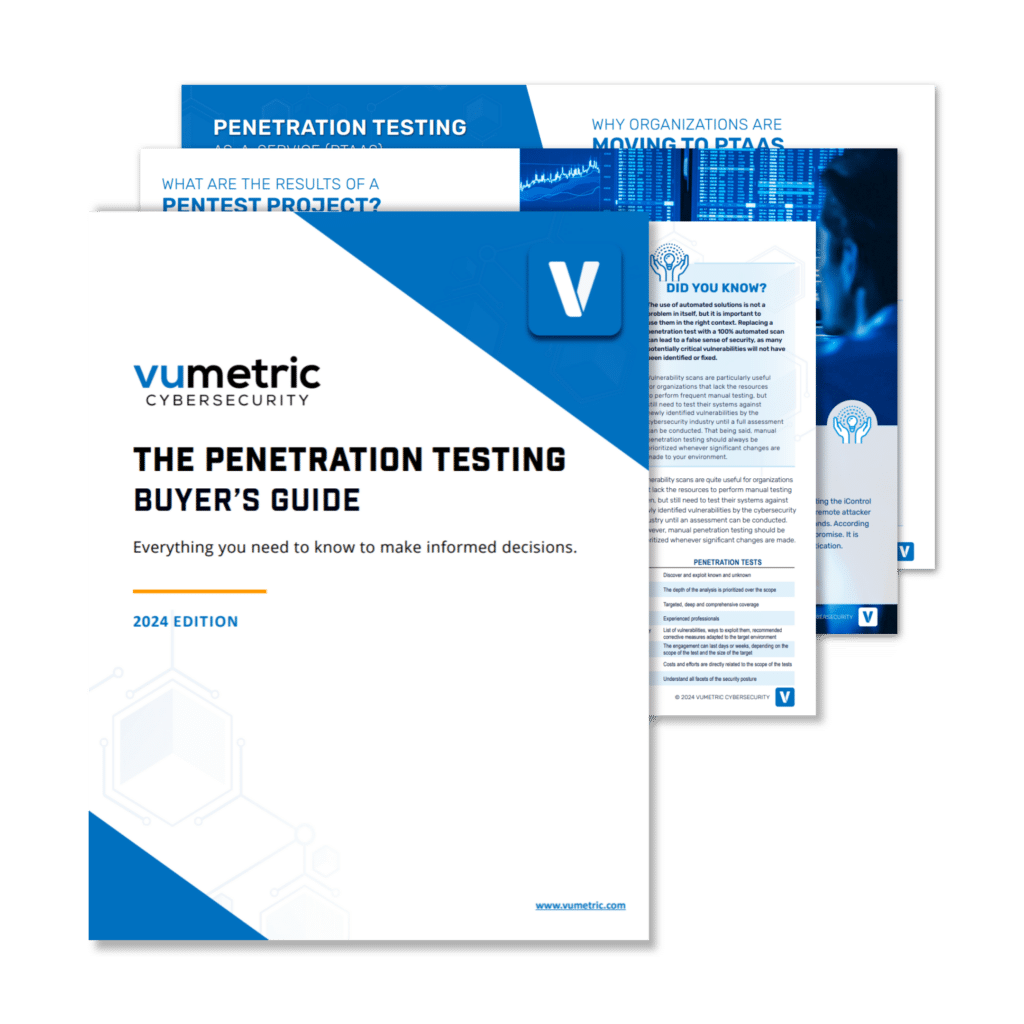Security Code Review Services
Improve your application’s resilience with Vumetric’s Security Code Review. Identify and fix vulnerabilities in your source code, aligning with leading standards like OWASP for enhanced cyber protection.
What you'll get:
- Executive Summary: Insights on codebase risk profile for decision makers
- Simplified Report: Clear, detailed report of source code vulnerabilities
- Mitigation solutions: Actionable steps to address identified security issues
- Best Practices Guidance: Tips for maintaining secure coding practices
- Attestation: Assistance in meeting standards like GDPR, PCI DSS, etc
What is Security Code Review?
Vumetric’s Security Code Review is a thorough examination of your application’s source code to identify security vulnerabilities, improper coding practices. At Vumetric, our approach to security code review is distinguished by the expertise and thoroughness we bring to each project. Our team, composed of seasoned security professionals, employs a balanced mix of advanced automated tools and meticulous manual inspection. Our approach is aligned with leading security standards such as OWASP, ensuring that our reviews and recommendations are both comprehensive and current with global best practices.
Beyond mere detection, Vumetric stands out for its commitment to proactive security enhancement. We don’t just pinpoint existing problems; we provide detailed guidance and recommendations for best coding practices. This advice is tailored to your specific needs and is designed to fortify your application against future vulnerabilities. Our aim is to equip your developers with the knowledge and tools they need to maintain and enhance the security of your software, ensuring long-term protection and resilience in an ever-evolving digital landscape.
Why Should You Perform Application Security Code Review?
- Adapting to Advanced Threats: Essential for adapting to sophisticated cyber threats, security code reviews strengthen applications against new hacking techniques and vulnerabilities.
- Adapts to Emerging Technologies and Practices: Regular reviews ensure the application’s security evolves with new technologies and practices, maintaining robust defenses in a rapidly changing tech landscape.
- Early Vulnerability Detection: Security code reviews catch vulnerabilities early, reducing exploit risks by addressing flaws before they become ingrained in the code, enhancing the application’s security from the start.
- Ensuring Compliance with Evolving Standards: Regular reviews are key to keeping applications in line with the latest cybersecurity standards and legal regulations, ensuring ongoing compliance.
- Security Best Practices Integration: Integrating secure coding practices from the outset through reviews establishes a strong security foundation, preventing common vulnerabilities and embedding security into the software development lifecycle.
- Reduces Cost of Late Fixes: Identifying and resolving security issues during development, rather than post-deployment, significantly cuts costs associated with late-stage fixes, rework, and potential operational disruptions.

How Does Security Code Review Secure Application?
- Improved Application Security: Address vulnerabilities at the application-level, ensuring robust security mechanisms.
- Regulatory Adherence: Ensure your codebase aligns with industry standards and best practices.
- Enhanced Code Quality: The review process can also enhance the overall quality and efficiency of your code.
- User Assurance: Reinforce the trust users place in your application by ensuring its security.
- Cost-Effective Strategy: Address vulnerabilities early, preventing potential costly breaches and subsequent reparations.
What Will be Assessed During A Security Code Review?
- Business Logic: Deep dive into the application’s logic, identifying potential flaws or vulnerabilities that could be exploited.
- Authentication Mechanisms: Examination of authentication processes and protocols. This includes checks for weak password policies, hardcoded credentials, and other potential pitfalls.
- Code Injection Points: Scrutinize potential areas susceptible to injections, such as SQL, OS Commands, and more, ensuring they are fortified against such attacks.
- Client-side Vulnerabilities: Comprehensive analysis of client-side codes, highlighting vulnerabilities like Cross-Site Scripting (XSS) and Cross-Site Request Forgery (CSRF).
- Third-party Components: Thorough evaluation of integrated third-party components, libraries, and modules for potential vulnerabilities they might introduce into the application.
- And More: Including session management vulnerabilities, insecure data storage or transfer points, weaknesses in cryptographic protocols, and potential backdoors or logic bombs.

The Main Obstacles to Writing Secure Code
- Expertise in Security Tools: Security tools require specialized expertise to use efficiently
- Misplaced Reliance on Firewalls: Firewalls are often misinterpreted as sufficient to block threats
- Lack of QA Involvement: Quality assurance teams are often not involved at this level
- Developer Training Gaps: Most developers are not trained specifically to write secure code
- Knowledge Gap in Standards: Top standards and best practices are often unknown to dev teams
Why Conduct A Security Code Review?
Security Code Review is a critical component of a comprehensive cybersecurity risk management strategy. Here are the key benefits:
Prevent Threats Actively
Proactively identify and address potential vulnerabilities in your codebase to avert exploitable threats.
Build User Confidence
A secure codebase not only boosts user trust but also fosters increased engagement due to assured safety.
Gain Competitive Edge
Stand out in the market with an application that promises not just functionality but also reliable security.
Ensure Regulatory Adherence
Stay ahead of the curve by consistently ensuring compliance with industry standards and regulations.
Minimize Costs
Proactively managing security helps to avoid the financial and reputational damage associated with potential breaches
Improved Security Posture
Strengthen your application's overall security posture with a robust, secure codebase, ensuring comprehensive protection against threats.
Got an Upcoming Project? Need Pricing For Your Security Code Review?
Answer a few questions regarding your cybersecurity needs and objectives to quickly receive a tailored quote. No engagement.
- You can also call us directly: 1-877-805-7475
Our Application Security Code Review Methodology
Our approach targets complex vulnerabilities in applications, focusing on those frequently exploited by hackers. It adheres to top-tier security standards, drawing from esteemed frameworks like OWASP, ensuring thorough, up-to-date analyses and advisories. This methodology, divided into three distinct phases, comprehensively addresses all potential risks for robust, current security strategies.
Threat Modeling
We Identify and document security risks associated with business logic.
Preliminary Scan
An extensive scan identifies technical and configuration vulnerabilities.
Security Code Review
Manual code assessment to identify insecure development practices.
Security Code Review FAQ
Couldn’t find the information you were looking for? Ask an expert directly.
The process of expert-led code reviews differs from automated scans in several significant ways:
- Depth of Analysis: Automated scans are efficient at identifying common vulnerabilities and patterns that are well-documented, but they lack the depth and contextual understanding that an expert can provide. Experts can identify complex issues, such as logic flaws or business rule violations, that automated tools may miss.
- Customized Insight: While automated tools follow a standardized approach, experts can tailor their analysis to the specific needs and context of your application. This includes understanding the business logic and unique aspects of your software, which leads to more relevant and actionable findings.
- Human Intuition and Experience: Experts bring their experience and intuition to the table, which helps in recognizing subtle vulnerabilities and potential future risks that an automated scan might not be programmed to detect.
- After Major Updates: It is crucial to conduct code reviews after significant changes to the codebase. These changes might introduce new vulnerabilities or affect existing functionalities.
- Regular Reviews: At a minimum, conducting a review at least once annually is recommended. Regular reviews help in maintaining the security posture of the application and adapting to new security threats.
We cover a wide range of popular programming languages like Java, Python, C++, and others. This broad spectrum ensures that most applications, regardless of the programming language they are built in, can be reviewed effectively.
Yes, the expertise is not limited to web applications but also extends to mobile applications. This includes both the client-side and server-side components of mobile apps, ensuring comprehensive coverage of the entire application ecosystem.
To protect your intellectual property, ensure that you engage a reputable service provider with strict confidentiality policies and measures in places. It's also a good idea to have non-disclosure agreements in place before sharing sensitive information.
Why Choose Vumetric For Security Code Review?
Vumetric is an ISO9001-certified boutique provider entirely dedicated to pen test, with more than 15 years of experience in the industry. Our methodologies are proven and our understanding of cybersecurity risks is extensive, allowing us to provide clear advice to our clients that is pragmatic, adapted to their needs and efficient in securing against any malicious attacker.
Leading source code
review methodology
Our testing methodologies are based on industry best practices and standards.
ExperiencedTeam
Our team of certified penetration testers conducts more than 400 pentest projects annually.
Actionable Results
We provide quality reports with actionable recommendations to fix identified vulnerabilities.
Download The Vumetric Penetration Testing Buyer's Guide!
Learn everything you need to know about penetration testing to conduct successful pentesting projects and make informed decisions in your upcoming cybersecurity assessments.
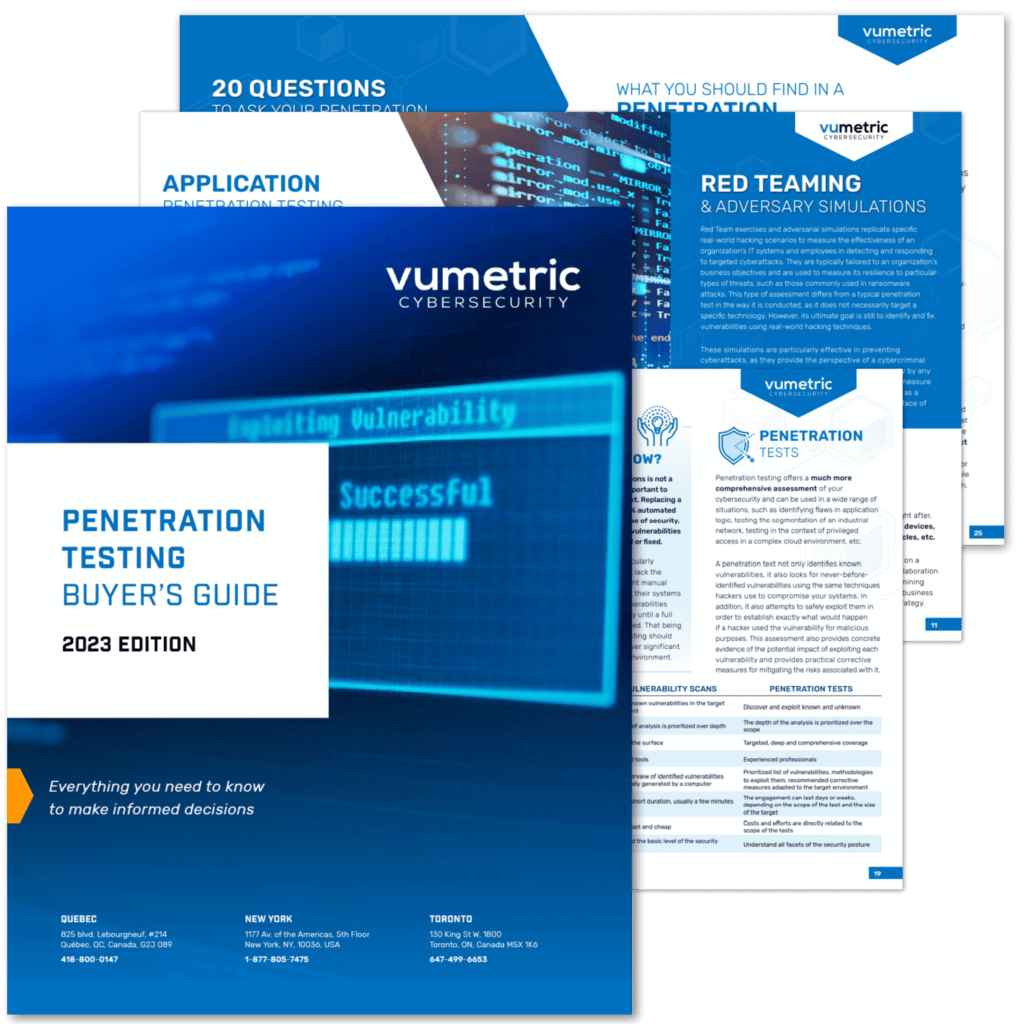
Read Our Clients' Success Stories
Discover how our pentest services helped organization of all kinds improve their cybersecurity:
“ Vumetric conducted penetration testing and showed us where we were vulnerable. They made the process smooth, were very responsive and well organized. They really impressed us as specialists in their field. ”
Elizabeth W., General Manager
" Vumetric Cybersecurity was able to complete their tests and provide the client with detailed reports that included issues and remedies. The team was highly proactive and communicative, and internal stakeholders were particularly impressed with Vumetric Cybersecurity's cost-effective approach. ”
Daniel Reichman, Ph.D, CEO and Chief Scientist
“ Vumetric performed manual and automated security testing of our systems. They met our deadlines and kept us updated throughout the testing process. Their presentation of findings and recommendations was engaging and effective. ”
Louis E., Director of IT & CISO
Featured Cybersecurity Resources
Gain insight on emerging hacking trends, recommended best practices and tips to improve Application security:
Certified Penetration Testing Team
Our experts hold the most widely recognized penetration testing certifications. Partner with the best in the industry to protect your mission critical IT assets against cyber threats.
